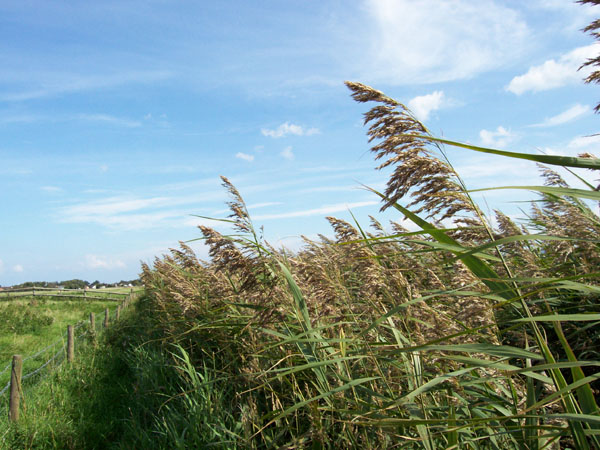
“Sewage treatment reed-beds may be at least as biodiverse as naturally occurring reed-beds and will add to the overall biodiversity and ecohydrology of a catchment whilst saving energy.” – International Journal of Ecology
What are reed beds?
In a low-impact context, they’re wastewater treatment systems that use growing wetland plants as the active component in getting effluent clean enough to discharge back into the receiving environment. Alternately called treatment wetlands, constructed wetlands or reed bed treatment systems, they have the potential to be low-cost, zero energy input, low-tech, high-efficiency systems that can be used to help protect streams and rivers from almost any source of effluent or dirty water.
How reed beds work
Despite appearances to the contrary, reed beds and constructed wetlands work in a very similar way to conventional treatment systems. Primary settlement takes place in a septic tank; secondary aeration is provided by the plants, which draw oxygen down to the roots via the leaves, where it becomes available for aerobic bacteria; tertiary polishing is carried out if the reed bed is built large enough, providing further removal of nitrogen and phosphorus.
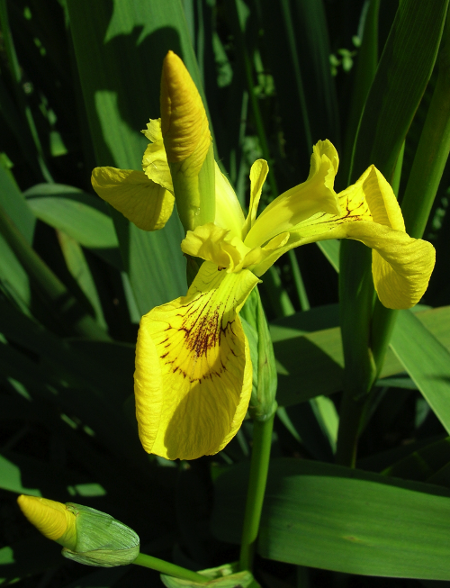
The following physical, chemical and biological treatment mechanisms all come into play (see glossary for explanations):
- sedimentation
- bacterial action
- filtration
- nutrient uptake
- adsorption
- precipitation
- decomposition
- volatilisation
Different types of reed bed system
The terms reed bed and constructed wetland are often used interchangeably, but there are a number of distinct system types within the general category of treatment wetlands. Although these different system types can be used in series on any given project, the design protocol for each type should not be used interchangeably. The different reed bed types are usually categorised as follows:
Soil-based constructed wetlands or free water surface (FWS) wetlands: most closely resemble a natural marsh. They consist of a lined shallow basin, backfilled to c.150mm with loam soil and planted with a selection of tall wetland plants. The effluent is treated as it moves slowly through the plant stems and leaf litter that accumulates in the shallow water of the marsh. Integrated constructed wetlands (ICW) and wetland ecosystem treatment (WET) systems both fall into the constructed wetland category.

Horizontal flow gravel reed beds or horizontal sub-surface flow (HSSF) systems: generally smaller in footprint area, they consist of a 6-700mm deep bed of washed limestone gravel into which common reed (Phragmites australis) and other wetland plant species are planted. The effluent is treated as it flows through the gravel and plant roots.
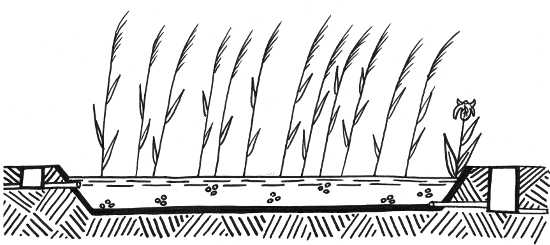
Vertical flow (VF) reed beds: similar in layout to a raised sand polishing filter or stone trickling filter. Vertical flow reed beds have a smaller footprint area than horizontal flow gravel reed beds, so may be more suited to small sites. The VF reed bed consists of c.1m depth of gravel, of progressively smaller particle sizes towards the bed surface. Effluent is dosed over the bed surface either by pumped feed or gravity dosing mechanism and treatment occurs as it trickles down over the gravel media and plant roots. Bear in mind that VF reed beds filled or topped with sand can be prone to blocking unless the exact aggregate grades are used and the correct degree of pretreatment is consistently achieved.
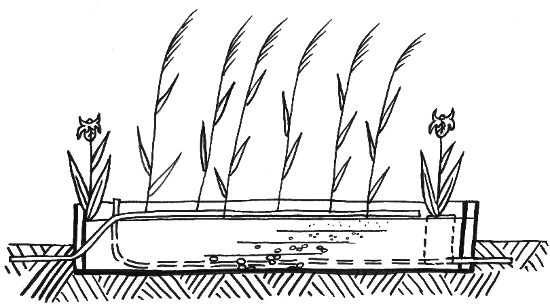
Ponds may also be used to provide additional storage volume. This extends the residence time within the overall system while keeping the footprint area modest. Ponds also have the advantage of offering an additional habitat dimension – particularly towards the end of a system where the effluent is cleaner. They also offer greater penetration of UV light than marsh areas, for extra die-off of pathogens. They pose a potential safety hazard however, and are thus often excluded from domestic systems.
What are the benefits of reed beds?
With our current global challenges of climate change and species extinction, reed beds and constructed wetlands can offer a zero energy input way to get our sewage clean, and also provide reliable sewage treatment at a time when continuation of reliable ongoing electricity supply to our municipal and domestic sewage systems is not guaranteed, thus helping to preserve the habitat integrity of our rivers, lakes and coastal waters for biodiversity.
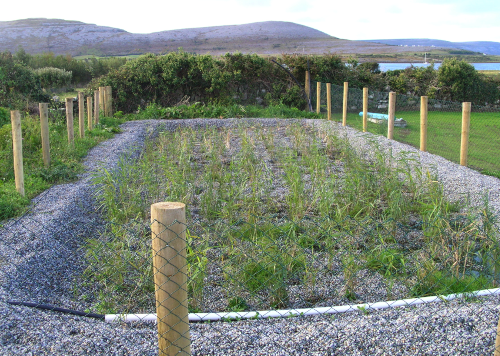
Soil-based constructed wetlands are less suited to small sites (<1 acre), due to their open nature, but work well on larger sites where a natural habitat appearance is desired. They can be a low-cost, low-resource system on clayey soils, but can also be plastic lined where needed.
Advantages:
- Constructed wetlands are open systems; with water sitting on a soil base and movement of water through a dense filter of leaf litter and plant stems. This means that they are very resilient to sludge overloading and hydraulic shock loading (i.e. sudden overloads of effluent). The water simply rises up over the sludge, or where sludge accumulation is excessive, it can be removed by direct excavation with a mechanical digger.
- They can be very cost-effective systems where heavy clay is present, negating the need for plastic lining. In such sites, full secondary and tertiary effluent treatment can be achieved for not much more cost than excavation and planting, following the septic tank.
- Clay-lined constructed wetlands are one of the lowest embedded energy input sewage treatment systems available, (along with dry toilets, which don’t even need the septic tank; and willow systems, which pay back carbon in firewood every year after construction).
- They are probably the best treatment wetland option for wildlife because they directly resemble marsh habitats, albeit nutrient-enriched ones.
- Where combined sewers are present, receiving both stormwater from roof surfaces and sewage effluent, constructed wetlands can be designed and sized to accommodate the rainfall-dependent flow patterns and still produce reliable effluent quality.
Limitations:
- Because they are open systems, they are more susceptible to odour generation. If odours are present in the septic tank, they can be channelled down the pipe to the wetland inlet. The solution is to ensure that eco-friendly detergents etc. are used in the home and that you position the wetland at a suitable separation distance from any houses.
- They contain open water to a depth of c. 200mm, which can be a safety hazard. The most common solution is to omit the pond (up to 1m deep) from the design, and to fence the wetland from children, animals and the general public.
- Due to their open nature they can be a potential source of pathogen contamination, transferred by pets, small animals or birds, and may thus be unsuitable for small sites or areas immediately adjacent to veg gardens or orchards.
- They need a bigger area than gravel reed beds: 100m² minimum wetland size vs. 25m² minimum reed bed size for a three-bedroom house.
Horizontal flow reed beds are more suitable for sites where space is limited, or where it’s desirable that the effluent is covered by a gravel surface. They need a tougher liner than soil-based wetlands, and tend to be more formal in final appearance, which can suit some garden layouts.
Advantages:
- Gravel reed beds usually have a smaller footprint area than soil-based constructed wetlands, so can be used on sites that don’t have space for a larger system.
- Because the water is entirely covered with gravel, they do not pose any potential drowning hazard, and are generally pathogen-free at ground surface level.
- Odours can also be less than from soil-based constructed wetlands because of the covered nature of the system.
- Since the water level in gravel reed beds is generally fixed at c.50mm below gravel surface, they may be used on sites where only small head losses are permitted, such as sites that are quite level, or where relatively high groundwater means that the final percolation trench level needs to remain as high as possible.
- Small modular reed bed units are relatively easy to install compared to using a plastic liner. That said, the author of Permaculture Guide to Reed Beds recommends that in all but the smallest of sites, you use sizing that is about double the UK guidelines design size, so these small units may be insufficient alone.

Limitations:
- Because gravel is used rather than soil, the liner needs to be stronger due to the risk of complete emptying and drying of the plants. Thus both liner costs and gravel costs can push the price higher than a soil-based wetland. However, where free-draining soils are present, requiring a durable liner anyway, gravel systems can be cheaper due to the smaller footprint area, so treat each site individually.
- The gravel media has the potential for clogging if the septic tank isn’t properly maintained. One potential solution is to install two septic tanks before the reed bed, or to use a septic tank filter unit at the outlet pipe. Nonetheless, maintenance is a bigger factor for reed beds than for soil-based wetlands.
- If you are using a small modular unit then it is extra important that your mechanical treatment unit is functioning at top efficiency all of the time to ensure that the overall system performs as designed. (Modular units are usually used only for tertiary treatment after a mechanical aeration unit).
- At some stage, the gravel will clog up anyway. Bacteria mass, sediments and plant debris will all contribute to the eventual congestion of the gravel. While soil-based wetlands have an adjustable flow control unit that can simply be raised as sediment levels rise, gravel reed beds will need a complete overhaul every 15 to 30 years depending on influent quality, system size and throughput volumes.
- Although effluent exposure is minimised, bear in mind that some effluent may still be exposed for some or all of the time at the surface or at the reed bed inlet, depending on the final design. As such they cannot be treated as sterile. Like soil-based wetlands, they should ideally be fenced to keep out pets, livestock and small children.
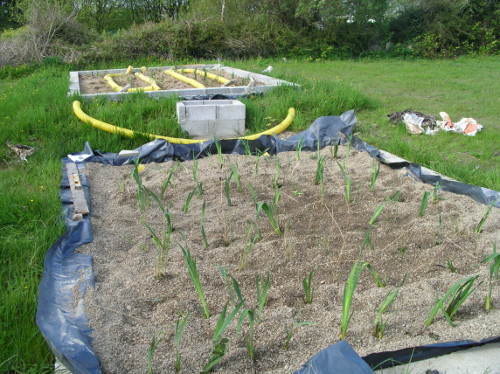
Vertical flow reed beds are generally used to pretreat effluent entering a horizontal flow reed bed, where a higher quality of effluent is needed in a small space. They can also be effective where good soil percolation characteristics exist, but where a quick burst of treatment is needed prior to discharge to ground. Their main drawback is that a pump is usually needed to provide the required distribution of effluent over the reed bed surface. That said, a gravity splitter, dosing box or syphon may all be used where suitable falls are present.
Advantages:
- Vertical flow reed beds are good for stripping ammonia (the smelly component) from septic tank effluent. They’re also efficient for BOD and suspended solids reductions in tandem with horizontal flow reed beds.
- They can be very effective where space is limited, because they reduce the overall size needed for secondary treatment, which in turn reduces the required size of the follow-up tertiary treatment wetland and final infiltration area.
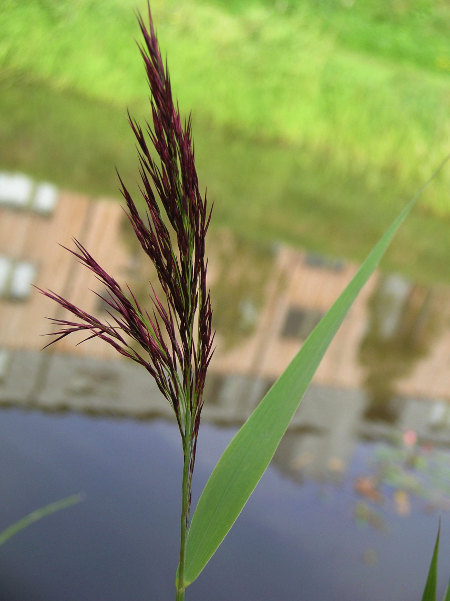
Limitations:
- A pumped feed is usually needed, which can add to ongoing energy needs and costs. However, where there is a fall on the site a gravity dosing box, siphon system or effective splitter unit may be used instead.
- VF reed beds are best used in conjunction with a horizontal flow bed or other treatment component, and the requirement for an extra system can add to the cost of a project.
- Incoming liquid needs to be sufficiently clean that it avoids clogging the pea gravel/sand surface layer. Thus ongoing septic tank maintenance is important (but unless you’re on a mains sewer, maintenance is important whatever sewage system you have).
- Greater inspection frequency is needed to ensure that the effluent spread is effective and the distribution network isn’t clogged.
What can I do?
There are a number of stages to any reed bed project. The more you can do yourself, the lower the overall cost. Reed beds and constructed wetlands generally require planning permission, so if you are good at preparing site drawings, system drawings and good at sourcing design information, this is something you can do yourself. Otherwise you may wish to hand over to a consultancy that specialises in constructed wetland and reed bed design. The excavation, lining, pipework and manhole construction all require input by somebody skilled in that kind of thing. You may hire a mini digger and do it yourself, or you may wish to hire a groundworks contractor, landscaper or sewage treatment system specialist. Planting with the right plants is the final stage (to be carried out before connecting the septic tank!). If you have a boggy field nearby with the right plants, that will be the lowest carbon footprint approach. You may also buy from specialist suppliers if you are stuck. Planting isn’t rocket science, but be sure to put the green bit up and the rooty bit down (it happens…). The Permaculture Guide to Reed Beds gives guidance on all of these stages, so if you want to do it yourself, it may be a good book to start with.
See our further information section for summary guides to constructing different types of reed beds, and here’s a pictoral guide to installing a horizontal flow reed bed.
What size should my reed bed be?
Below is a rough guide, based on sizing recommendations from the EPA (Ireland) and GBG-42 (UK).
| System type | Size per p.e. | Minimum size |
| Horizontal flow gravel reed bed | 5m² | 25m² |
| Vertical flow gravel reed bed | 1-3m² | 15m² |
| Vertical flow sand reed bed | 3-6m² | 25m² |
| Soil-based constructed wetland | 20m² | 100m² |
| Constructed wetlands including roof runoff | 40m² | – |
These sizes are meant to treat domestic sewage to “secondary treatment standard”. For additional filtration or “tertiary polishing” add an extra basin of c.50% of the size of the first one. The larger the reed bed, the better the final effluent quality.
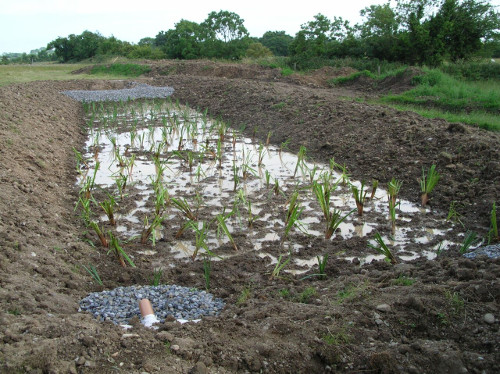
Can I use a reed bed for greywater or stormwater?
In many respects using a reed bed for grey water only has certain advantages over treating both black water and grey water together. The system can be smaller because the influent is not as dirty, and has much lower pathogen levels. If you build the wetland sufficiently large, you can reuse the final effluent for watering a polytunnel (note that whatever cleaners, cosmetics or household chemicals you use will end up in your food, so best to use only natural cleaners etc.).
Grey water reed beds may not require planning permission. Usually planning permission is needed for a reed bed system, but if you’re building a garden feature irrigated with grey water, or a wetland filter for recycling grey water for irrigation, then it may not be classed as a sewage treatment system per se. Remember however that grey water from washing machines and dishwashers can be surprisingly polluted with nutrients, detergents, cleaning chemicals etc., so be sure not to undersize your system. Grey water accounts for c.60% of all household sewage volume, so in general terms it is suggested to build your grey water wetland or reed bed at 60% of the standard sizing recommendations. See Art Ludwig’s Oasis Design for guidance on grey water systems generally.

Reed beds may also be used as part of a low-impact source separation system. After diversion of the urine or separation of the faecal matter from the sewer, the flush water may be routed directly to the reed bed for further filtration. This provides nutrient and biomass recovery as well as high-quality treatment of the residual flush water and grey water.
Constructed wetlands are also excellent for use as SUDS (Sustainable Drainage Systems) to filter runoff from factory yards, roof surfaces and roads. They can be fitted with a variable flow control unit to allow the system to flood during times of heavy rainfall and then draw down slowly in drier weather to balance the flow in nearby streams and to filter the water before reintroducing it into the environment.
Thanks to Feidhlim Harty of FH Wetland Systems for information and pics.
Whilst you’re here, why not take a look at the other 25+ utilities topics available? And don’t forget to visit our main topics page to explore over 200 aspects of low-impact living and our homepage to learn more about why we do what we do.
The specialist(s) below will respond to queries on this topic. Please comment in the box at the bottom of the page.

Féidhlim Harty is an environmental consultant and writer, and director of FH Wetland Systems Ltd., a company specialising in wetland and reed bed design, willow systems and habitat enhancement. He is the author of Septic Tank Options & Alternatives and Permaculture Guide to Reed Beds, both published by Permanent Publications.
The views expressed here are those of the author and not necessarily lowimpact.org's
48 Comments
-
1Francesca Beltrame April 17th, 2018
Dear Féidhlim Harty,
I am an architecture student and I am really interested in your research and would love to implement this technology in my project.
Thus I wanted to ask can you build reed beds in lets say a big terrace designed purposely and live near them or do they need to be in the middle of gardens ? Could they be build for example of roofs if these roofs are very thick like the ones for green roofs ?
Finally do reed beds smell bad like algae tanks ?
Many thanks,
Fran B
-
2Feidhlim Harty April 20th, 2018
Hi Fran, thanks for your query. In a nutshell you can build your reed bed anywhere you wish – in theory. There are some limitations to that, as follows. There is typically a minimum distance requirement between any sewage treatment system and any dwelling. The Irish EPA Code of Practice requires 10m; PPG4 for Scotland, Northern Ireland and Wales requires 15m; I’m not sure what the EA General Binding Rules state, but it’s probably similar to PPG4, which they supersede. So that’s the legal guidance. From a structural perspective, water and gravel are both very heavy. A standard gravel reed bed of 600-700mm depth will probably weigh 1-2 tonnes per m2. That’s a lot more weight than a standard green roof will be required to hold. You can do it, by all means, but the increased structural requirements will require concrete and steel with a higher embodied energy input than the reed bed will save you by being a zero energy sewage treatment system.
If you want to build the reed bed purely as an experimental project then there are ways to lighten the overall weight of the system in a lab environment. If that’s what you’re working on let me know and we can tease out how best to approach it.
Vis a vis the comparison with algae tanks, I’m not sure what algae tanks smell like so I’m not really qualified to answer. However reed beds and constructed wetland systems can have odours associated with them – like any sewage treatment system really – particularly if lots of bleach or other toxins are added to the system and kill off the beneficial aerobic bacteria that do most of the work for you. If you have low chemical inputs, then sewage treatment reedbeds are usually very low in odour generation. Stormwater reed beds for treating car park and motorway runoff generally don’t have any particular odour other than that of a natural wetland habitat.
Let me know if you’ve any further questions on any of the above or on the project that you have in mind.
Féidhlim
-
3Patrick Edwards May 9th, 2018
Hi,
I have a largish pond which takes all the rainwater (just the rainwater, no sewage etc.) from our bungalow (roughly 457,000 litres- 25m x 16m and 2m deep in places). We now have fish to deal with parasitic insect larvae etc. The water is not clear (visibility only down to 15cm below the surface). Leaves etc do find their way into the pond in autumn/winter. Could a reed bed remove the nutrients causing the murkiness of the water? We have plenty of room around the pond to accommodate something. Any advice welcome,
Many thanks
Patrick
-
4Feidhlim Harty May 10th, 2018
HI Patrick, yes a reed bed may well be a good solution to filtering the pond water. You could install a solar pump to deliver water to a raised vertical flow reed bed (or just an initial pea-gravel filter, which would be easier to clean of any leaves or algae than a reed bed) and then have a follow-up, willow planted sand filter (clean coarse sand or clean quarry grit). The size will depend on the volume that you’ll be pumping and the suspended solids and nutrient inputs. Based on a 457m3 pond, I’d suggest two filter units of 1-2m2 each and see how that serves you. You may need to tweak it as you go along based on the actual inputs. The system depth for each should be c.50-90cm. Leave the upper one unplanted to act as a screen filter, and plant the lower with Phragmites, Iris, Mentha and or Typha.
-
5Ludwig Appeltans May 15th, 2018
Dear Feidhlim Harty
We are going to build a new greywater system for our permaculture project on Rubha Phoil on the Isle of Skye.
The system will need to clean water from 40 shower uses a day, a busy washing machine and a kitchen that serves up to 15 people. Therefore we estimate a discharge of about 1890 l/d.
It will need to be accepted by SEPA (scottish environment protection agency) as a soak away system.
Our current design for the greywatersystem looks like this:
1. a barrel (D=50 cm, H= 100 cm) filled with straw below the kitchen sink to filter the solids and also one below the shower block
2. two vertical reed beds for the water from the kitchen sink and the washing machine: two plastic boxes each about 2.5 m^2 and 1 m deep (nitrification)
3. small “settlement tank” between the reed beds (only a bucket because the discharge is small)
4. horizontal reed bed for all the water, water from the showers (only nature friendly soap used) directly led into the horizontal reed bed without a vertical reed bed before, about 100 m^2, H=0.7 m
(nitrification and de-nitrification)
5. pond (about 5 m2, The water will not need to be used for irrigation, but support wildlife.)
It would be great if you could help us to improve the design and give us some tips for several questions.
Do you think the greywatersystem would work like this? Are the reed beds big enough?
Is it recommendable to lead the water from the showers directly into the horizontal reed bed? Or do we have to build a vertical reed bed for the water of the showers too? (It would be problematic because it needs a lot of space)
Which plants would you recommend to use for the vertical and which for the horizontal reed bed?
Do we have to build aeration pipes in the reed beds?
Do you have further tips for the design?
We’d be delighted if you could help. Thank you.
Kind regards
Ludwig and Lea
-
6Let's Scratch Blog May 16th, 2018
Dear Ludwig and Lea,
I’m going to give a quick run-down of my water estimates to compare with your own: If your showers are 5mins each x 10 litres/min (for pump assisted showers) x 40 uses/d then the daily flow from showers alone will be 2000 litres. Or roughly half that if you are using gravity fed showers. A water efficient washing machine will use c.60 litres/cycle x 3 cycles/d(?) = 180 litres/d. Kitchen for serving c.15 people x 15 litres/p/d = 225 litres/d. Thus a total of 1400-2400 litres/d depending on your shower delivery and the number of washes/d. So assuming that you’ve checked all these carefully for your calculations let’s assume 1890 litres/d. For a water usage of 150 litres/p/d, that equates to 12.6 pe (persons equivalent).
Grey water alone will be cleaner than grey+black (do you use compost toilets instead of generating black water?), but even so, since the population size is based on effluent volumes, I’m inclined to leave it at the full pe size of 12.6 rather than reduce this.
If you were to follow the sizing protocol set out above in the article then you’d need a VF gravel reed bed of between 12.6 and 37.8m2 in size as a secondary treatment stage (after primary settlement in a septic tank or via the straw filter that you have described). Then if you want additional treatment, a horizontal flow reed bed of c.12.6m2 is also needed, followed by an infiltration area of a suitable size (typically a function of the infiltration value of the soil, the effluent volume and the cleanliness of the effluent).
Or: to follow the route you’ve proposed, but adding my own sizing figures for comparison:
Showers: filtered first via the straw filter, then routed directly to the tertiary treatment HF reed bed (since the effluent contamination loading will be very low anyway). c.1500 litres/d = 10pe; thus tertiary treatment reed bed size of 10m2.
Kitchen and washing machines = c.500 litres/d = c.3.3pe with straw filter followed by secondary treatment VF reed bed of between 3.3 and 10m2 in size, followed by tertiary treatment area HF reed bed of 3.3m2.
Thus according to my figures you need the two straw filters (well packed with straw and well maintained to ensure that they work well as preliminary screen filters to replace a septic tank); a total VF reed bed area of 3.3-10m2 depending on rainfall for secondary treatment (you’ve selected 5m2 in total, which is probably ok); a total HF reed bed area of 13.3m2 for tertiary treatment (you’ve selected 100m2).
So based on these figures, I’d estimate that the sizes you’ve selected are appropriate, and would add that you should not reduce the HF reed bed based on my figures above. My figures are all minimum recommended sizes – the larger the area, the better the treatment.
Regarding final infiltration. Will the pond have an overflow, or are you likely to get infiltration into the ground around it? If it is the former, then you’ll probably need specific permissions from the council for a discharge to surface waters. If the latter, then it may be acceptable tot he council for you to argue that you’re essentially going for infiltration to ground after/with the pond.
So that’s my answer to Q1: Yes it should work as described, and yet it looks large enough.
Q2 – In my opinion, you could feasibly omit the VF bed from the shower effluent.
Q3 – Common reed (Phragmites australis, at 0.6m spacing) is the best plant for gravel systems due to the deep root and vigorous growth. Yellow flag (Iris psuedacorus) will add colour if planted along the inlet or outlet end (HF bed) or along the visible side of the system (HF or VF bed) (c.10% of the total surface area, at 0.3m spacing). Water mint (Mentha aquatica, at 20-30cm spacing in a single row) may also be used along the inlet and outlet ends (HF bed). You may be able to source these locally in a drain or stream. Ask permission, and take care to observe any local ecological designations.
Q4 – Aeration pipes: Not for the HF bed. I’m actually not at all sure about the VF bed, since my experience with these is more limited. If pushed I’d say, yes, put in some yellow pipes along the base and emerging at one end and feeding to the outlet manhole at the other end.
Q5 – Tips: yes, lots. I wrote a book on the subject ? Other than copying and pasting the book in full I wouldn’t know where to start. You can buy it online from my website http://www.wetlandsystems.ie/shop.html or from the Permaculture Magazine website Green Shopping. But do feel free to just ask questions if you have them. One final word actually – I’m not a fan of cutting reeds and do not recommend it. The work is potentially dangerous due to the ease of getting light but deepish cuts from the reeds combined with the presence of sewage contamination (on most sites anyway) – and I don’t think it really helps that much with the system effectiveness either. Over time gravel beds will clog up and need to have the gravel replaced (5 to 20 years depending on the amount of solids entering it), whereas soil based constructed wetland will last longer – but need larger sizing.
Hope that helps. Best of luck with the project.
Féidhlim
-
7Paul Zieleniewski June 5th, 2018
Nice work, Feidhlim. Good to see knowledge and use of these soil systems evolving. One question: where you use a blower in a septic chamber (first or second?) in a 3-4 bedroom dwelling, how significantly would this affect the amount of ground needed for final treatment prior to discharge to ground or watercourse? It seems to me that one major limitation in a pure soil-based treatment system is the area of land required. Maybe not such a problem in Ireland but in England this could be more of an issue. I can’t see many country cottages here with half an acre of ground devoted to domestic sewage treatment.
-
8Feidhlim Harty June 6th, 2018
Thanks Paul. Vis a vis the blower – typically a blower is used as part of a mechanical aeration system rather than inserted in a septic tank per se (which, by definition, is a septic, or anaerobic, system). The designs vary, but typically a mechanical aeration system will have a settlement component first, an aeration chamber next, and a further settlement stage after, or alongside the aeration section.
Ok, if you have a mechanical aeration system instead of a septic tank for a 4 bedroom dwelling (6 persons equivalent, in Irish EPA guidance), then the reed bed sizing can drop, or be omitted completely, prior to disposal to ground. Watercourse discharges will typically require tertiary treatment in the UK as far as I know, and are generally prohibited in Ireland. In a nutshell, the sizes given in this info sheet (size table above, from my book) are for secondary treatment of septic tank effluent. If you want a mechanical unit using electricity, then that is an alternative way to achieve the same effluent quality. The infiltration area will remain the same for any secondary treatment option.
If you want to reduce the size of the infiltration area, then add a tertiary treatment element after secondary treatment: Allow a minimum size of 1m2/pe for VF or HF reed bed, or 10m2/pe for constructed wetland. Note: the latter will perform better due to the larger size… Then your final infiltration area will be reduced in size. Your local codes will show you what size your infiltration area will need to be, or this is the focus of chapter 7 of my reed bed book, so I won’t repeat it all here because it’s a bit long ?
If you have a small site, then the most ecofriendly option is a dry compost toilet in conjunction with a reed bed for filtering grey water. If you want a flush loo, one option is to use a Dubbletten urine diversion toilet to remove the urine as a fertiliser, and use an Aquatron unit to remove solids from the main 4″ pipe leaving the toilet. This recoups both nutrients and biomass for composting. Then route the flush water directly to a willow-planted infiltration area to mop up further nutrients, while not taking up too much space.
Or, if you’re connected to the sewer, lobby for willow treatment to recoup nutrients and sequester atmospheric carbon at a municipal scale.
-
9Paul Zieleniewski June 6th, 2018
Hello again, Feidhlim. Thank you for coming back to me on that. I’m going to have a good read of your permaculture book. With regard to practicalities, I have an existing discharge consent (subject to BOD, S.Ss and NH3 limits). Not sure how that relates to current regulations as there are now so-called binding rules in place. I’ll start by getting some samples tested and work from there. It always helps to start with objective data! Thanks again.
-
10Martin Haddrill October 5th, 2018
Your website looks very useful indeed. We are trying to decide on the best way to treat limited amounts of sewage from a one bedroom, two person, dwelling (low impact life-style!) which can be left unoccupied for a week or two at a time. Could we engineer a small reed bed (after a septic tank) to stay alive without any feed? Many thanks for your thoughts in advance. Martin
-
11Feidhlim Harty October 8th, 2018
Hi Paul, have a look at https://www.lowimpact.org/lowimpact-topic/septic-tanks/ for background info and links to the General Binding Rules. it may be of some help.
-
12Feidhlim Harty October 8th, 2018
Hi Martin, A soil based constructed wetland is generally a better option than a gravel reed bed system if you plan to be away from the system for a stretch of time. Any holes that may form in the plastic liner of a system over time would drain down in the gravel bed and possibly kill off your plants, whereas the soil based wetland will stay moist and alive even with minor leakage.
From the table in the article you’ll see that that requires c.40m2 if it is really just for 2 people. Set that out as a single basin of c. 4m x 10m, or a little narrower and longer preferably. That’s the wet area at the base of the sloping embankment. If you have heavy clay soils, so much the better – you may not need a plastic liner in that case.
Hope that helps.
-
13Syed Shazli Azher January 14th, 2019
HI, May I know what type of training can be provided to the client staff before the Reed Bed system is handed over.
-
14Feidhlim Harty January 14th, 2019
Hi Syed, do you mean what training the construction staff can avail of prior to completion of the system; or do you mean staff at a business where the reed bed is to be used? The more information you can give me the clearer the answer I can offer. If some of the information is confidential, you can also email me on [email protected] if you prefer, although if the discussion can be had within the forum then it can help others to learn more.
-
15Penny April 26th, 2019
We have a mini waste treatment plant with reeds at our croft here in Orkney, and are keen to use “reed bed friendly” shower and hand wash products, and to supply them for our guests to use. There are so many so-called “eco friendly” products out there, but this refers mainly to their production and their benefits to the skin. How do you tell which are most kind to the reeds? Can you recommend any? Which chemicals am I meant to be reducing/avoiding?
Many Thanks,
Penny@Little Bothy, Evie.
-
16Feidhlim Harty April 29th, 2019
Hi Penny, basically anything you buy in a health food shop will be kinder to the reeds and the microorganisms that flourish within a reed bed than the standard supermarket stuff. If it’s kind to your skin and safe in production, then it’s usually a pretty safe bed that it will be safe for the plants too. In a nutshell the main thing to avoid is products with bleach or antibacterial agents; or microplastics (so anything that says “poly…” anything (or nylon) in the ingredients list).
-
17Colette Ahearn June 21st, 2019
Hi. I have a horizontal gravel reedbed. Its small in size. I dont know anythjng about reed beds so ive found this article very knterestjng. Im wondering though, my reedbed it constantly over grown with nettles. As soon as ivd weeded i nearly have to start again they just thrive. Is this a bad thing havjng nettles growing in a reed bed??? Any advice really appreciated.
Thank you!
-
18Feidhlim Harty June 24th, 2019
Hi Colette, Nettles aren’t necessarily a problem in a reed bed, unless they begin to push out the common reed (Phragmites) or other wetland species that are meant to be there. If the competition is reducing reed cover then you could drown them. Do you have the capacity to raise the water level to 1″ above existing gravel level for a few months?
This will work better for a horizontal flow reed bed than a vertical flow bed, but either way it depends on your outlet piping set-up. If you want to take a photo of the bed and email me on [email protected] I may be able to give you some more info.
Hope that helps.
-
19Tony Hickinbottom July 30th, 2019
Good evening Feidhlim,
I am just embarking on my education to the benefits if reed beds for our off grid house we are building in Wales. Our site is sloping, but we have the means to terrace areas for reed beds as required. However we only have about 600mm of soil, that is very stoney, before we hit the underlying shale rock. The site does drain well though.
I am slightly confused as to whether it is a requirement to have a septic tank prior to a reed bed or not?? If this is a requirement I would only want to run the black water in to it and run the greywater directly to the reed bed.
How do you ensure that the design meets legal requirements?
Thanks
Tony
-
20Feidhlim Harty July 31st, 2019
Hi Tony, here in Ireland (RoI) a septic tank is typically a requirement as part of the planning process (unless using a dry toilet etc.). I’m not sure if Wales is the same. I know in France Aquatiris have a reed bed model that takes pumped effluent from a macerator chamber which does not need settlement first, but dumps all the contents onto the vertical flow reed bed surface. That wasn’t possible here, according to those in the Dept of Envt.
So the standard recommendation is to have a septic tank for black water (and grey water in RoI – or have a settlement tank if you don’t route grey water through the septic tank).
Have a look here https://www.easymerchant.co.uk/blog/septic-tank-regulations/ for a write up on the new septic tank regulations (high on a google search, but not read thoroughly…).
As part of a formal design process, the legal requirements are part of the considerations. Your own engineer should be able to guide you on that, or if you want a reed bed design please let me know.
all the best with the work ahead,
Féidhlim
-
21Tony Hickinbottom August 1st, 2019
Thanks Feidhlim,
I will look at the information you have sent and get back to you when I have a full set of plans.
Regards
Tony
-
22lauren simpson August 12th, 2019
Thanks for a very useful article.
We are soon to construct a horizontal flow gravel reed bed for the grey water from our small dwelling. We will have dry compost toilets so no black water. We are a household of 2 and so am i right in thinking we could just have a reed bed 6 square metres? (5 square metre x 2) x 0.6. However we’d like a system that doesn’t have an outpipe, but instead processes all the water through the plants / evaporation – which I believe is possible – but can you advise on the required sizing of this please?
It also says above that the minimum should be 25 square metres but I am hoping this is only relevant to systems dealing with black water?
We are also hoping to avoid using a septic tank – but instead a simple settling system of a bucket with straw in it before the grey water enters the reed bed- but I’m not sure on the sizing of such a bucket – or whether this is ok.
Thank you very much
Laure
-
23Annette Waterhouse August 14th, 2019
Hi
Your website has such a wealth of good information so firstly thank you for that!
I’m just wondering if you could pass on some of your knowledge as we’re struggling to work out what we can and can’t do! We have a shepherd hut we’re converting (in England) and want to make it totally off grid. We’re thinking of a using a macerator toilet or a urine separating compost toilet and then there will be the grey water from kitchen sink and wc basin. We’d love to ideally use a reed bed system, obviously avoiding the need for a septic. We’re just wondering whether this is possible as we have a watercourse (local brook) which is only 3 meters or so away from the shepherd hut and if so, what system you’d recommend.
Many thanks
Annette
-
24Feidhlim Harty August 16th, 2019
Hi Annette, thanks for your kind words about the website. ? glad to hear it has been helpful.
There are certain minimum distances needed between any treatment system type and boundaries/dwellings etc. Info is in my reed bed book if you’re interested: http://www.wetlandsystems.ie/permaculturereedbeds.html.
If you are going off grid, then the less draw on your solar/wind system the better. Thus best to go for a dry toilet rather than a macerating one if you can. If you’ve not used dry toilets before, find somebody who has before you put in all the infrastructure and leave out the flush infrastructure. It’s the best ecological system going, but not everybody likes them.
A reed bed is great then for the grey water – or sized for full toilet and grey water combined if you prefer. Another option is to route the flush water through a woodchip filter and willow bed. Here’s a design for a site in Portugal that seems to work very well. https://permies.com/t/37192/Vermicomposting-Flush-Toilet
If you want to know more about the many different types of systems there is info in my more general treatment options book: http://www.wetlandsystems.ie/watertips.html
If you’d like more detail about what exactly will fit into your site, email me a pdf or dwg map of your site, showing buildings, boundaries, watercourses, wells, scale and preferably topography. Email me on [email protected] and I’ll help if I can. ?
Féidhlim
-
25Annette Waterhouse August 17th, 2019
Thank you so much Feidhlim for your reply. I’ll email you some more details in the next couple of days. Many thanks! Annette
-
26Nikeita Saraf September 28th, 2019
Hi Feidhlim Harty
A very informative article indeed
I am an architecture student and wish to incorporate the reed bed system in my project for treating grey water and reusing it for flushing and watering vegetation in and around the structure.
I wanted to understand the stages that the water will have to go through as a part of the system. Also, would the water be stored in a tank or treated again after it overflows from the reed bed?
Thanking you
Nikeita Saraf
-
27Feidhlim Harty September 30th, 2019
Thanks Nikeita, If you want to reuse the final effluent from a grey water reed bed I suggest making the system larger than standard (because you won’t have the benefit of soil percolation, which is an inherent part of the typiical treatment process in the percolation area after the reed bed). I propose storing the water in a garden pond rather than a tank, because the former won’t get as anaerobic, and will allow further treatment to occur. Fit a pump sump (even just a sunken blue plastic barrel) at one side of the pond. Also look up Art Ludwig’s Oasis Design website in the US for really good information on grey water reuse.
All the best with it, Féidhlim
-
28Trevor Allan Davies October 4th, 2020
Hi
We’re awaiting planning consent for an OPD project in Wales. I’m looking for the simplest most compact and lowest impact solution to the waste water management situation here.
We’ll have a ‘Jenkyns’ style humanure toilet by choice (there’s no possibility of mains sewage anyway), kitchen and bathroom sinks, a shower cubicle & manually powered washing machine, and no other household facilities producing grey water. Household water will be via the mains supply. There are two of us, with the likelihood of 2 or 3 guests/volunteers through the year.
Given that sewage doesn’t come into the picture, that we’d rather stay away from electric pumps, and that the recycled greywater would be used only for irrigation offlowers, trees, & soft fruit bushes, would it be a viable option to install a subsurface horizontal flow system in this instance? The house effluent would be filtered for food solids and go through a grease trap before it hit the SSHF, it seems to me we shouldn’t need anything too sophisticated…
We’ll probably build it ourselves.
If this is a bad idea, can you point me in a better direction?
Many Thanks
Trevor
-
29Feidhlim Harty October 5th, 2020
Hi Trevor, a SSHF reed bed should work fine; or a soil based constructed wetland system (which would be a bit larger but would not require quarried gravel, and has a longer life due to resilience to suspended solids inputs). I’d recommend a grease trap or (woodchip filter if you have the falls) for prescreening solids. Sludge can be an issue for grey water, and if you have a gravel reed bed the gravel will clog prematurely if you don’t keep sludges out. Use the standard sizes in the article allowing a 40% reduction in size to allow for the lack of black water. If you want to use the discharge as irrigation, then everything you add to the system (shampoo, washing up liquid, lipstick, kitchen cleaners…) should be food grade. Don’t rely on the system to take out chemicals. It will to some extent, but better to use food grade cleaners and cosmetics instead.
An alternative is to use a willow filter. Have a look here for details on that: https://www.wetlandsystems.ie/Images/cleaning_effluent_pm.pdf
This will work after the grease trap or after the reed bed, depending on how clean you want the water. It won’t double as an irrigation source, because it will mop up the liquid for you – but it will generate biomass for firewood and/or compost.
All the best with it,
Féidhlim
-
30odhran October 19th, 2020
Hi Feidhlim,
Just finishing reading your fantastic book. Recommending it to friends who would be intrested.
I am trying to design a gray water only treatment system at the moment.
I will filter solids under kitchen sink and hopefully be able to use the bluebarrel with straw and wood chips as a grese trap or possible buy a more hi-tech trap. I am thinking of a large VF bed going onto a willow system like in your link on the previous question. I feel like i am asking a silly question but i dont seem to find it mentioned. Where are the reeds, phragmites australis planted? Say on page 115 of your book, point 12 is base gravel layer and point 15 is top sand layer. Where is the rootball of the plant been sown?
Thanks so much for your great book and this excelent website.
Odhran
-
31Feidhlim Harty October 27th, 2020
Hi Odhran, I’m delighted that you’re finding the book valuable. That’s great to hear. I’ve had a quick look and I don’t see any mention of where to put the plants in a gravel reed bed!! Plant them just below the surface of the gravel (read the section on sand clogging on p.56 in case you’re planning on using sand as a final cover material). If the tops of the plant plugs are level with the top surface of the gravel, that should be perfect. Their roots should be in water, but the top half of the plus in gravel, but not flooded. Hope that helps ?
-
32Liam Kean November 1st, 2020
Hi Féidhlim. I was wondering if you could help me. We are a small landscape design company who approach things from a permaculture perspective. We have a client who has asked us to install a reed bed for them. Their requirements are for a smallholding with 2 single person houses plus 10 dairy cattle (urine only) which goes into a septic tank which is already installed and then on to the reed bed, and then from that into a soakaway system – as such, the reed bed is supplementary to the already established system. They have had a builder in who has dug a 20m2 surface area hole already which they want to utilise, and don’t want it to be much bigger. also, the ground is almost completely clay, and would prefer not to use a liner. My proposal to them is to make a vertical flow reed bed utilising the established hole, but then have that feed into a pond, with willow planted around that for further cleansing and filtering before it being directed back to the soakaway…………..My question is: does this seem suitable, or is the size of proposed reed bed and lack of a liner just not sufficient for the volume of effluent? Also – I have bought your book (great resource by the way!), but could you direct me towards any info about gravity feeding a vertical flow reed bed as we don’t want to install a pump – there is no power on that part of the site anyway.
I echo the thoughts on the above post about thanks for the great book and this excellent site
Liam
-
33Feidhlim Harty November 4th, 2020
Hi Liam, thanks for that feedback. For mentions of gravity dosing see p40, 57, 82, 85. Two websites which are useful are http://www.ribbit.ie for gravity splitters for continuous flow (good on shallow gradients) and https://www.reedbedsirl.com/building-reedbed-systems/water-treatment/ (a mention only, but you can email Ollan Herr for details) for a very robust gravity dosing box (needing a greater gradient to work).
Vis a vis your client, it’s tricky to say from the detail provided. To properly assess whether the cattle inputs would be ok for the size proposed I’d need to know the different pollutant levels, volumes per day and the requirements of the receiving water, which would take a few hours to calculate and require those details from you first. Has the client carried out any analysis that you know of?
In general terms input from cattle is very high in BOD, N, P and suspended solids. Usually I’d keep these separate from systems for sewage simply to avoid overloading the latter, and also because if you keep them separate then you can potentially reuse the agricultural effluents more readily as an irrigation or fertiliser source.
If the soil is deep heavy marl clay then there should be no need for a plastic liner. Take care to seal well during works by compacting wet with a digger. If you’re using a gravel reed bed on clay you may wish to put in a light plastic liner as well (silage pit cover plastic works fine) to prevent mixing of the gravel and clay over time.
If you want to email me on [email protected] with flow volumes and concentrations if you have them I may be able to provide a bit more guidance on the system size.
Féidhlim
-
34Megha V November 18th, 2020
Hi Féidhlim, it is a wonderful technic. Sir, can I used this method in high TDS leachate management, will it be effective. It is hazardous waste landfill leachate. Will it be helpful to remove COD. KINDLY reply.
-
35Feidhlim Harty November 20th, 2020
Hi Megha, yes we’ve used constructed wetland systems for leachate filtration. BOD, SS, COD all respond well; whereas N and P takes more area to get good reductions. Email me on [email protected] if you want to discuss a specific project.
Féidhlim
-
36William Tooby January 6th, 2021
Hi Feidhlim, We are constructng some 2 compost loos & showers for a camping area here at The Fold and intend to build a vertical flow filter bed approx 1.5 x 2m for the shower and wash water. I have noticed some references suggesting woodchip may be more efective than sand and gravel in such situations. Can you comment or advise please?
many thanks
William
-
37Laura Brown January 9th, 2021
Hi Féidhlim,
We are at the last stages of constructing our horizontal flow reed bed. We have two liners in place and the outflow pipe in place. We have filled it with water to test it’s working correctly, the first didn’t work so we reseated the pipe with clay. The second time the water level has receded Too which is a bit disheartening. We used bitumen tape and jubilee clip. Any tips on what clay we should be using to seal? Or how to get a better seal in place? We used local Cornish white clay.
Thanks so much,
Laura B
-
38Feidhlim Harty January 13th, 2021
Hi William, Anna Eday has done a certain amount of research on woodchip filters in Ma, USA. Her website is https://www.solvivagreenlight.com/solviva_website/wastewater.htm and I have found her book Green Light at the End of the Tunnel to be a useful read in this regard. Personally I’d go for woodchips rather than gravel if you have the option to do so (and are not bound be building codes) but the woodchip will compost down with time and need replacing sooner than gravel (which will also become congested with solids over time and need replacing anyway, but over a longer time frame.)
-
39Feidhlim Harty January 13th, 2021
Hi Laura, I don’t have much experience of mixing clay with plastic for lining reed beds. it sounds as if it may present challenges; most notably achieving a seal where the two come in contact with one another.
For plastic the following may be of use, excerpted from my design notes:
Many different liner options are available for reed bed systems. They vary considerably in terms of cost, durability and effectiveness. The gravel medium in reed beds has the capacity to be very abrasive to liners during the construction phase. Thereafter, the plants used tend to be very aggressive in their growth habits, and some species such as Phragmites australis and Typha latifolia are known to have the ability to puncture some types of plastic liners. In many instances the plant roots themselves will reseal any such puncture so that no drop in water level becomes apparent, but for extra certainty of effectiveness it is prudent to select an appropriate liner type at the outset.
Treatment Wetlands by Kadlec and Wallace (2009) lists minimum synthetic liner thicknesses as 0.76mm for PVC or 1.00mm for LDPE and HDPE. Some Irish suppliers offer a lifetime guarantee for PVC and HDPE for 0.5mm and 0.75mm thicknesses respectively. Danish guidelines for reed beds recommended minimum thickness for HDPE or LDPE of 0.5mm (Miljoministeriet, Okologisk Byfornyelse og Spildevandsrensning Nr.52, 2004). PVC has the drawback of toxicity during manufacture, recycling and disposal and is not recommended on environmental grounds. EPDM and Butyl Rubber are also available, but their reliability should be ascertained prior to use.
With all liners it is important to transport, store, lay and work around with care. If a puncture occurs during construction work, this should be fixed immediately. In the long term, if the system leaks it may be necessary to remove the plants, gravel and liner and start with a new liner, so care at the construction phase is crucial. Sand blinding may be used for some site conditions or for some liner types. Typically where a synthetic liner is used over a clay sub-soil, sand should be avoided. This will allow the potential for self-sealing in the event of a localised puncture. Before ordering a liner, talk with the suppliers about the particular application and let site conditions guide the decision.
The following are some companies that supply liners for constructed wetland applications, it is not an endorsement, merely a means of providing assistance in your search for a suitable liner. Where indigenous impermeable clay lining is not an option, these or other liner suppliers should be investigated to find the most suitable liner for a particular site. Where the indigenous subsoil is pure potters clay it is the most cost effective and easily used material, but even then it should have a polyethylene liner sandwiched between two protective polypropylene sheets to provide protection of the wetland effluent from siltation from surrounding soil.
Note that light gauge liners should only be used as a back-up to wetlands being constructed in very impermeable clay conditions. Otherwise use a liner that will withstand the roots of the wetland plants, such as 0.76mm PVC or 1mm LDPE/HDPE.
If you want some notes on clay seals drop me an email at [email protected]. It’s a bit long to copy in here.
For a plastic liner, I’d go back to bitumen tape and the jubilee clip, with a top hat fitting from a builders providers.
-
40backtrackbothies January 18th, 2021
Hi Féidhlim, your article was very illuminating and inspiring, thank you. We are about to build 3 eco-cabins for guests, and would like a reed bed system. We live on the West coast of Scotland in a beautiful area and are trying to develop with as little impact, using natural/local materials. We will have a maximum of 10 guests at any time (we do not live in site but close by for maintenance). We are using urine-diverting toilets and composting the solids, so just urine and grey water will go into the septic tank. There will be 3 basins in total, 3 kitchen sinks, 3 showers. Using Scottish Water’s calculator I estimate water usage of 92 litres per person per day. So that’s urine (maybe 1.4 litres on average per person, per day) grey water for 10 people max, probably more likely to be half that number on average most days but have calculated for 10. I am thinking a dosing chamber, two vertical flow beds split with a divider (one in use, one resting), followed by a horizontal flow bed, and a sampling chamber. Using the GBG (and my poor maths!) I estimate the two vertical beds should be 3.25m X 3m each (based on a 30% size reduction due to no black water) and the horizontal bed 4m X 1m. The site slopes from the septic tank downwards and we can achieve the depths required. Does this sound ok? I would also like to know what I could put at the outfall. I am thinking of a row of willow. I would be extremely grateful for any help and advice you have. Best wishes, Ally
-
41Feidhlim Harty January 20th, 2021
Hi Ally, thanks for your kind comments and your query. It looks like you’ve done the calculations quite thoroughly. I could redo that design calculation work, but it would take a bit of time and I’d charge for it. Email me at [email protected] if you’d like to do so.
Great that you have the falls for 2 VF beds in series. Check out http://www.ribbit.ie for a really good splitter unit; or http://www.reedbedsirl.com for an good durable dosing box supplier.
Willow uptake rates are c.8kg/ha/yr for Phosphorus; and 40kg/ha/yr for Nitrogen, so you should be able to calculate the total area needed to give full uptake of N and P. Actually though, if you have diverted urine, then the best way to “treat” it is to use it as a fertiliser source on the garden or farmland or neighbours farmland. That reduces the amount of bagged nitrogen and phosphorus, and the heavy environmental toll that they take on the environment – particularly N.
I hope that all helps, best of luck with the work ahead, Féidhlim
-
42xoomba April 20th, 2021
Hi Féidhlim
We are about to construct a reed bed system for filtering water from a small dye operation. We use fiber reactive dyes for organic cotton with a cationic treatment that eliminates the need for using salt and soda ash. The process with the cationic treatment is such that the remaining dye bath is practically clear because almost all of the dye has thoroughly bonded with the cotton. I think the system will use 5 tp 6 hundred liters at most per day and some days, nothing at all. I’m wondering what would be the most appropriate system to put in place for this. Thanks so much.
-
43Feidhlim Harty April 26th, 2021
Hi, it sounds as if the process is already pretty clean. If you’d be permitted to discharge to ground or a nearby watercourse untreated, or with the current degree of treatment, then you could also put in a soil based constructed wetland system wtih a pond element; or a willow percolation area as your infiltration system if you have one, or both. One of the basic sizing recommendations is <500m3/ha/d, so you can extrapolate from there – and probably greatly increase the size for the flow rates you'll have. You could make the whole thing into a pleasant habitat if the influent is sufficiently clean. Bear in mind that without knowing the exact constituents of the effluent it is tricky to say what sized system will be needed, but those are some thoughts that may be of use.
-
44sally fonseca March 2nd, 2023
Dear Féidhlim Harty,
We plan to install a constructed wetland to clean harvested rainwater from a former brownfield site (no sewage but possibly some run off from nearby road) to top up a swimpond. This is a community project at a very early stage in the campaign, and we have been asked the following question.
When the reeds are cut back (and presumably composted on site) what happens to the pollutants/toxins the reeds have taken up? In other words, are the toxins stored in the plant and then released when they break down or does the reed convert the toxins into a product that is safe?
Thank you
-
45Feidhlim Harty March 2nd, 2023
Dear Sally, cool project!
I would avoid cutting back the reeds. Particularly Phragmites australis, which is like light bamboo and prone to splintering enthusiastically and leading to possible cuts everywhere. Not a great combination if there are rats around at all which may allow Weil’s Disease into the body.
The various pollutants are addressed via a variety of physical, chemical and biological mechanisms and do not need to have the plants cut and removed in order for the system to be effective. Possible exceptions are N and P, which can benefit from plant removal; but I would remove softer, fleshier plant material from the pond area rather than Phragmites – an easier job and one that is less likely to lead to cuts and scratches.
All that said, the larger the area of marsh preceding the pond the better from a pollution reduction perspective. Maximise the potential for water to stand and settle en route to the swim pond if you can.
all the best with it all and happy dipping,
Féidhlim
-
46Dr.Usharani RK June 12th, 2023
Dear, Feidhlim Harty
I am a Post-Doctoral Researcher, interested and wish to work in a hybrid technology along with reed bed,
hence i am in need of reference of your published article and books relevant to this topic.
thank you for your kind response and support
With Regards
Usha
-
47Rebecca Stacey June 12th, 2023
Hi Dr Usharani - on behalf of Feidhlim:
Dear Usha,
The following may be of assistance to you. Not all are reed bed related, but may be of relevance to give some context and overview:
- (2019) Towards Zero Waste – How to Live a Circular Life. Permanent Publications. Hampshire, UK.
- (2017) Permaculture Guide to Reed Beds – Designing, Building and Planting Your Treatment Wetland System. Permanent Publications. Hampshire, UK.
- (2016) Closed Loop Agricultural for Environmental Enhancement – Returning Biomass and Nutrients from Humanure and Urine to Agriculture. FEASTA (Foundation for the Economics of Sustainability), Dublin.
- (2014) Septic Tank Options and Alternatives - Your Guide to Conventional, Natural and Eco-friendly Methods and Technologies. Permanent Publications. Hampshire, UK.
- (2009) Get Rid of Your Bin – and Save Money. Mercier Press, Cork. (a handbook for household-scale waste minimisation.)
The following may be more in the area of your focus, but my role was very peripheral so you'd be better to contact the lead authors instead:
- Babatunde, A.O., Zhao, Y.Q., Yang, Y. and Harty, F. (2006). Investigation of the application of dewatered alum sludge as a medium in reed beds for animal farm wastewater treatment. In: Proceedings of 7th international Symposium on Waste Management Problems in Agro-industries, 27-29 September, Amsterdam RAI, The Netherlands, pp. 199-204.
- Zhao, Y.Q., Babatunde, A.O., Razali, M and Harty, F. (2006). Integrating "wastes" into treatment processes: Can dewatered alum sludge be used as a substrate in reed bed treatment systems?. In: Proceedings of 10th IWA International Conference on Wetland Systems for Water Pollution Control, 23-29 September, Portugal, Vol III, pp. 1395-1404.
Older papers, articles etc. are here:
- Harty F and Otte ML (2003) Constructed Wetlands for the Treatment of Waste Water, In Otte, ML Wetlands of Ireland – Distribution, Ecology, Uses and Economic Value, UCD Press, Dublin. Pp 182-190.
- Wetland Systems (1998), 8th Irish Environmental Researchers Colloquium, Sligo RTC.
- Pollution Solution (1997), Peatland News, Journal of the Irish Peatland Conservation Council, Spring, 1997.
- Constructed wetland systems for the treatment of septic tank effluent from domestic dwellings (1997). In Mackey P, M Gerrard, M Gill, B Garcin & P Garcin: Rural Sewage Alternatives – Domestic sewage treatment in rural areas and its effect on water quality, An Taisce, North Tipperary Association.
- Constructed wetlands for wastewater treatment, the case of Ballymaloe House (1997) 7th Environmental Researchers Colloquium, University of Limerick.
-
48Mandy Burton November 2nd, 2023
Dear Féidhlim Harty
Some years ago I made a rhyming picture book-The Loveliest Loo, for young readers, about the delights of composting loos.for low impact.org. It had a boring beginning and didn’t really work.
Im rewriting the story as a novel for older children, and as the plot has developed, my protagonists ideas have grown. She now wants to transform the entire waste water system of her small, Cornish town, (population around 1000.)
This has made me think how this could be done?
For sometime I’ve been enamoured with hydrothermal carbonisation, imagining local farm/orchard/textile waste also being treated.
What grabs me is the transformation of forever chemicals and micro plastics.
But further reading has convinced me HTC is a high energy, highly engineered process and perhaps reeds and willow would work?
How large a site would be needed to take all the waste from a small town of 1000 people bearing in mind an influx of tourists in summer months!
Is this possible?
As a work of fiction, space, soil quality, etc can be made to fit.
My aim is to create an entertaining story that could begin conversations in schools about large scale alternatives.
Many thanks for you time .
Mandy Burton




 Compost toilets
Compost toilets
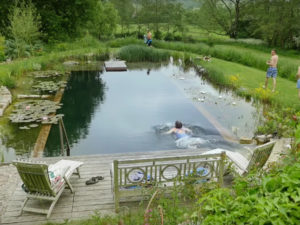 Natural swimming pools
Natural swimming pools
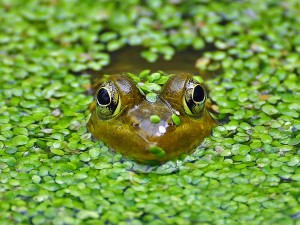 Ponds
Ponds
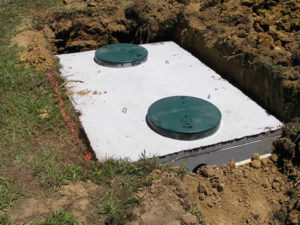 Septic tanks & drainage fields
Septic tanks & drainage fields
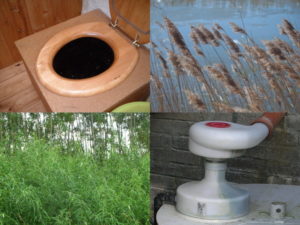 Low-impact sewage treatment
Low-impact sewage treatment
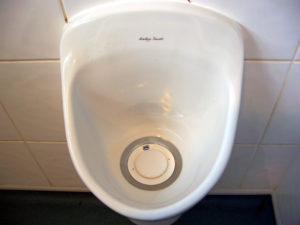 Waterless urinals
Waterless urinals


